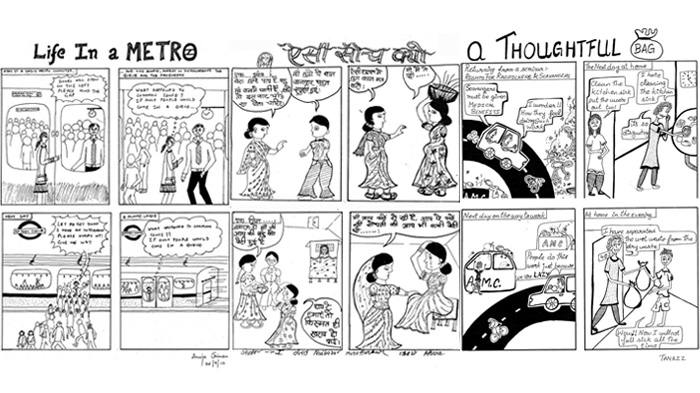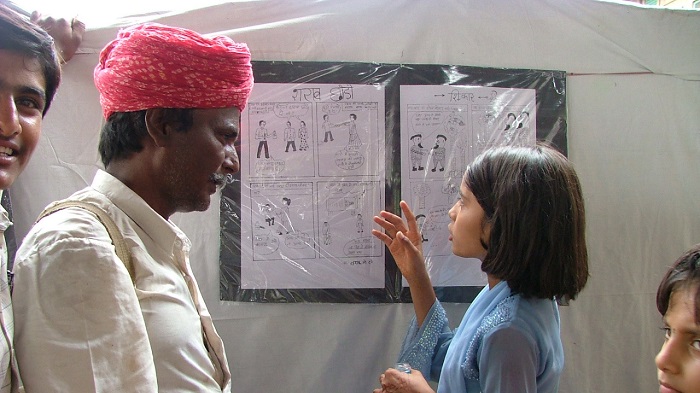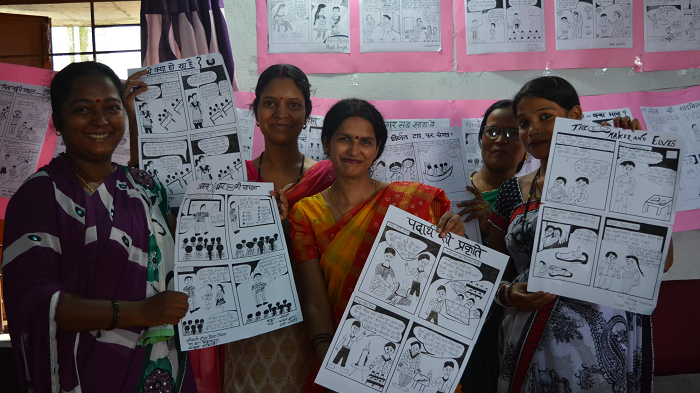When Amresh’s efforts lead to hand-pump installation in schools of Bihar, when a class eight student stopped her friend from having a child marriage, when a student from Uttarakhand managed to suspend his drunkard headmaster, eyebrows were raised, but in appreciation, in pride!
The man behind the comical movement, Sharad Sharma has managed to address various social issues with the help of a medium as simple yet effective as comics! “The whole idea is that how an individual’s expression could take some sort of shape so that it could become part of the development discourse,” explains Sharma.

World Comics is a non-funded organisation and runs with the help of volunteers and operates from its Delhi-based studio. WCI’s brainchild ‘Grassroots Comics’ is an outcome of the issues faced by the common man and is now a local movement turned global.
It was 1990s and India waited in anticipation to see the results of newly introduced economic reforms. The print media was struggling to sustain. TV channels already lacked the desired lustre. The NGO world had not yet boomed. The wheeler bookstalls at railway stations were still a hopeful source of books and comics.
The only big names in comics in those days were Diamond Comics and Lotpot Magazine, with Amar Chitra Katha being parents’ favourite. The majority of the population was away from the focus of mainstream media. Human interest stories tended to die early deaths as regional and vernacular press still played a limited role.
While volunteering with a group in Rajasthan for the literacy campaign, Sharma started converting the heavy-texted reading material into short stories. He supported the stories with illustrations and that worked. “In a series of workshops locals were taught to develop their own community media – first in text, which was then gradually replaced by visual stories, that is comics,” Sharma exclaimed.
The comic world is vast. The powerful tool should not just be limited to superhero or mythological stories; it has the potential to be used in education. And then the comic medium to run campaigns began in 2005 in Barner, Rajasthan.

The movement took another turn when illiterates, domestic workers, prisoners, street vendors took the paper and pen in hand to ask for the rights they deserve. When around 100 comics generated in just two days during a workshop, World Comics India (WCI) team was beaming with pride. The comics are not about creating perfect art, but showcasing the issues you need the authority to deal with. Teachers from around India without hesitation started using grassroots comics as a teaching-learning tool in their classrooms.

WCI has been experimenting with grassroots comics around the globe. Workshops organised in countries like Estonia, Finland and Sweden generated equal amount of interest as in India or Pakistan.
Comics have turned into an interesting medium for telling untold stories or sharing concerns and expressing views. What’s more fascinating is the fact that the comics come out of a perspective of someone without any clue about the art of comics, someone who is not an artist but a common local expressing his concern.
The stories come from various states encompassing different issues from social causes to depression and even discrimination faced by students.
“This media will march parallel to the mainstream media and remind them about the real issues and the silent majority, and for this reason we need to take comics seriously,” quoted Sharma.

